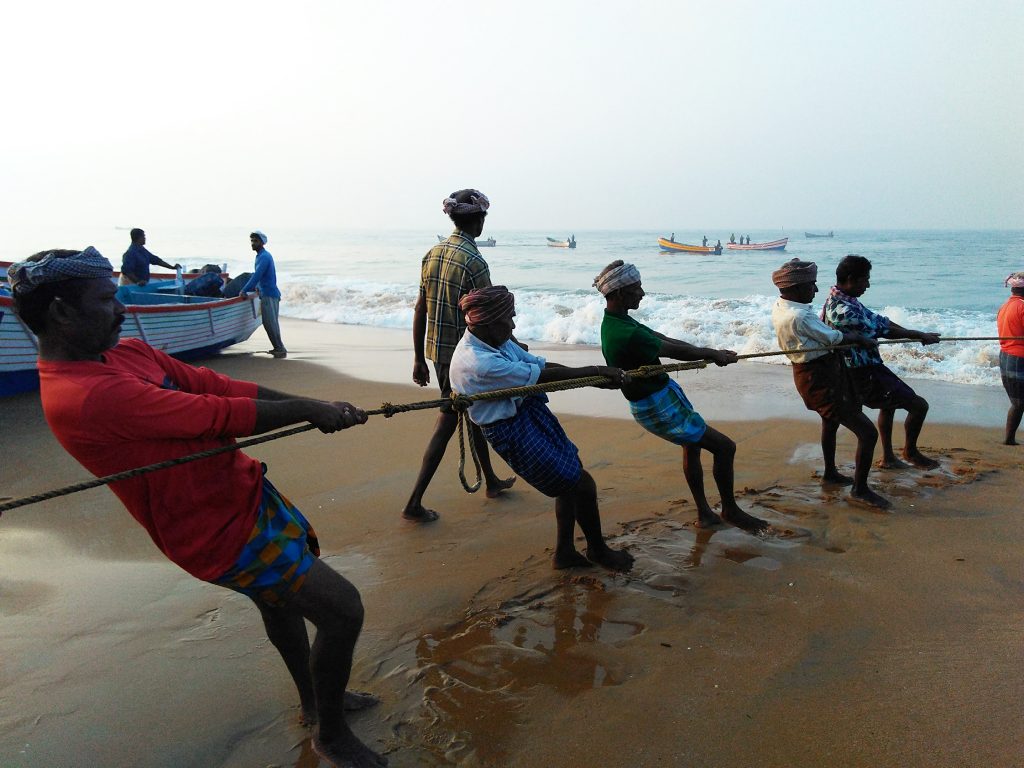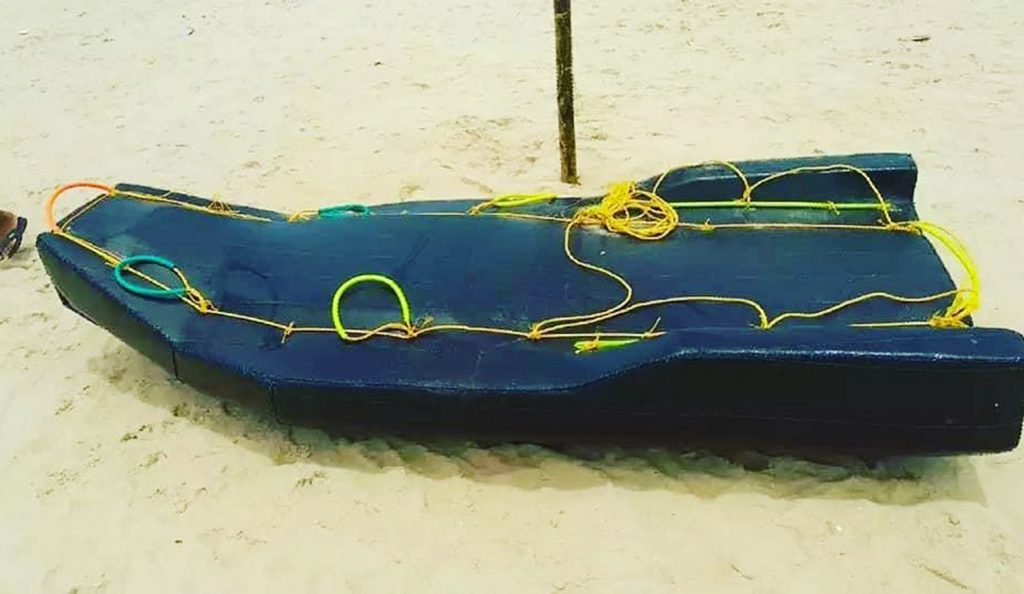The future of sustainable fisheries around the world does not lie merely in the scale of operations but in the artisanal attitude and its attendant culture.
This article is by John Kurien (kurien.john@gmail.com), Visiting Professor, Azim Premji University, Bengaluru
This is the International Year of Artisanal Fisheries and Aquaculture (IYAFA 2022). From a quick survey of the website of the Food and Agriculture Organization of the United Nations (FAO) and many other publicity briefs of civil society organizations (CSOs) that are co-celebrating the year, the focus is strongly on small-scale fisheries and aquaculture. ‘Small in scale, big in value’ is one of the key messages.
But I wonder: What has happened to the ‘artisanal’ dimension of the celebrations? Why is there no focus on that? Is there today no overlap between small-scale and artisanal? Or was this a relationship of the past? Should we seek to revive it in the future?
Without getting into the detailed etymology of the word, there are three very appealing attributes to any activity that we can call ‘artisanal’: skill of body and mind; judicious use of human and renewable energy; and freedom of work and expression. These combine to give the activity an artistic overtone. Together, they lead to convivial and sustainable livelihoods.

I had spent a considerable part of my early working life with fishing communities in the state of Kerala in India. They joyfully embodied these three attributes in their daily lives. However, observing their context half a century on, I notice that there is little overlap between how they fish today and the valuable attributes of artisanal activity they possessed earlier.
I have also been a keen observer of their trajectory over the years, studying the manner in which they lost these attributes.
But I am happy to report that some of my recent observations on the coast reveal that there is a slow return to artisanal practices. Let me try to briefly explain this cycle of events, starting with the initial context of the fishery, and restricting my story to the technology of fish harvesting at sea.
… I am happy to report that some of my recent observations on the coast reveal that there is a slow return to artisanal practices
We start with the craft called the kattumaram. For a deep-sea going marine fishing craft, this is as simple as it can get. The kattumaramis just four logs of wood, about 10-15 ft in length, tied together with coir ropes across a cross bow at each end—the ultimate do-it-yourself (DIY) craft. At sea it is unsinkable, though being on it makes you feel like you are sitting or standing on water! The kattumaramis initially powered by rowing with a split bamboo pole. Later the lateen (triangular) cloth sail can be rigged mid-sea, with bamboo poles and coir ropes, to even gather the swell of winds blowing almost in the opposite direction. This is the ultimate in sailing skills.
The launching of a kattumaramis followed by rowing it speedily to get across the rough surf waves. The art of rigging and operating the sails, fishing in deep waters out of sight from the shore, then getting back to the village on the shore, even at night, guided only by the stars… all evidence of the remarkable skill of body and mind, as also the creative ability to harness renewable energy to make a living. This is the artisanal way par excellence, with zero operating cost.
The change began with the introduction of the outboard motors (OBMs) in the early 1980s. Initially, the motor was fitted to one of the cross bows. But, it soon became evident that the centuries-old DIY kattumaramand the sleek Japanese-manufactured OBMs are structurally incompatible. This realization led to design of the plywood kattumaram. An unsinkable craft looking much like the original, it better accommodated the OBM. The only downside was that it could not be dismantled.
The propulsion power of the OBM soon led to the obsolescence of the sail. That, in turn, caused the gradual loss of the artisanal skill of understanding the nuance of winds and working in tandem with nature. While OBMs relieved the drudgery of physical labour and increased the time available exclusively for fishing, they also contributed to decline in the fishers’ fitness. They also increased accidents on crossing the surf.
… OBMs relieved the drudgery of physical labour and increased the time available exclusively for fishing
On the financial side, the motors added significantly to investment and operating costs. But they changed little in the probability of harvesting more fish. On occasions when fishers harvested more fish, prices dropped on shore. Their net earnings increased only marginally.
While only a few fishers adopted OBMs of a certain power rating, they stood to have a comparative advantage over those who did not have the motors. They could get to the fishing ground faster, fish for longer periods and get back to the shore earlier, thus getting a higher price. That advantage disappeared when all fishers in a village adopted the same type of motors; everyone reached a lower equilibrium, so to speak. The investment and operating costs increased but the increase in earnings was not commensurate with the expenditure incurred.
A few fishers broke out of this trap by opting for motors with more power. This triggered a vicious cycle of higher capital investment and a race to guzzle fossil fuels. Bigger and more powerful engines, in turn, fuelled the demand for newer types of craft. The modified plywood kattumaramwas not suitable any longer. Bigger craft, more canoe-shaped, were prized. The new models provided more room for carrying larger nets. This warranted a bigger crew; their total lack of artisanal skills—even knowing how to swim—was not an issue now. Seasonal migrants from non-fishing communities, with no knowledge of the sea, were adequate. You just needed ‘labour’! And the race to the bottom went on and on.

I recently estimated the collective results of this adventure over 50 years. It shows that the individual outcomes have been varied and that inequalities between fishers have increased. The net result has been a rise in the fossil-fuel consumption and in the average investment in craft and gear. The median level of indebtedness has increased at galloping speed. Yet the collective fish harvests began to plateau a decade ago and have now started a downward trend.
Discussions with fishers—all small-scale, beach-landing operators—reveal the realization among them that this Olympic race of adopting larger boats, more fishing gear and more powerful motors is leading to collective catastrophe. They realize that this needs to stop.
But their quandary was who will take the first step?
That was when I discovered a new but raging trend on the coast. Along one stretch of a sandy beach, I noted a new raft-like contraption. It had a flat base of thermocol/polystyrene, about nine ft by four ft, stitched around in black rexine. It looked more like a Brazilian jungada than a kattumaram! There were over 200 of them in close proximity.
They were steered with a paddle-shaped oar. Each could carry about 10 kg of gillnets and accommodate two fishers. The owner-operators of these rafts were middle-aged fishers; they had not forgotten their skills of rowing and sailing. Fishing was in eyeshot of the coast, from 5 a.m. to 8 a.m. Afterwards, they took their nets with the fish still gilled onto them to the highway and sold the fresh fish, straight off the net, to customers passing by in cars. No fuel costs! A daily income made from five hours of labour, adequate for sustaining their families—and the freedom to engage in other pursuits.
A fisher was close at hand and he spoke into my voice recorder: “There is no meaning in this race we have got ourselves into. Every other fisherman is steeped in debt. We started with 9-hp (horsepower) OBMs. We are now using 45 hp, but still fish the same shoals. When I started fishing 25 years ago everyone got enough fish. Now one unit catches it all. The others come back without even casting their nets, and having to bear the cost of fuel and pay for the food of the crew. The losses accumulate. Many like me have now gotten out of this race. The future is perhaps in stepping back to traditional (artisanal) ways of fishing. Near our homes. Using our knowledge and skills.”
The thermocol rafts are certainly not the answer to the fishery problems of Kerala. They are a calibrated response to the overall crisis facing the fishery. These rafts can only be used in the months when the sea is calm, usually November to February. But such surety about the condition of the sea is also a thing of the past. The rafts do pose crew-safety issues in the event of overturning, particularly for those who may not be expert swimmers. The Fisheries Department is unwilling to provide a registration for these vessels because insurance companies will not cover risks of fishers using such ‘unseaworthy’ structures which do not qualify to be defined as fishing craft.
Yet, these rafts represent some basic, innate and hidden attributes that are worthy of serious consideration. These are attributes historically associated with artisans, and with what we call the ‘artisanal’ way. Let me mention a few: Artisanal fisheries can be decentralized and spatially dispersed. They have a low carbon footprint and near-zero operating costs. They embody freedom and emancipation from indebtedness, owing to the possibility of owner-operatorship. This allows fishers to flexibly combine fishing, at a chosen time of day or night, with other meaningful avocations. The conviviality of labour and work also makes it possible for fishers to revive a healthy and active lifestyle. Artisanal methods can help communities regain the intimate knowledge of the sea and its moods, now lost with fuel-powered propulsion. Finally, the shorter value chains of these fisheries are more viable, providing fresh products and direct contacts between harvesters and consumers.
As the world celebrates the International Year of Artisanal Fisheries and Aquaculture, can we also ponder over these attributes and issues?
For more
The Human Relationship with Our Ocean Planet
https://oceanpanel.org/blue-papers/HumanRelationshipwithOurOceanPlanet
From Individual Rights to Community Commons
Involving the People
https://www.fao.org/voluntary-guidelines-small-scale-fisheries/resources/detail/en/c/1475206/